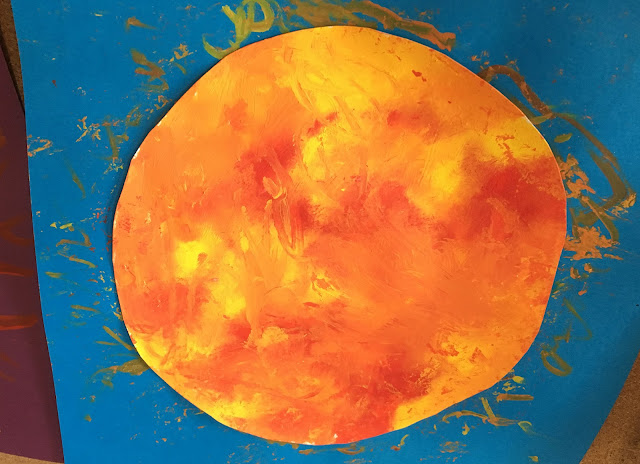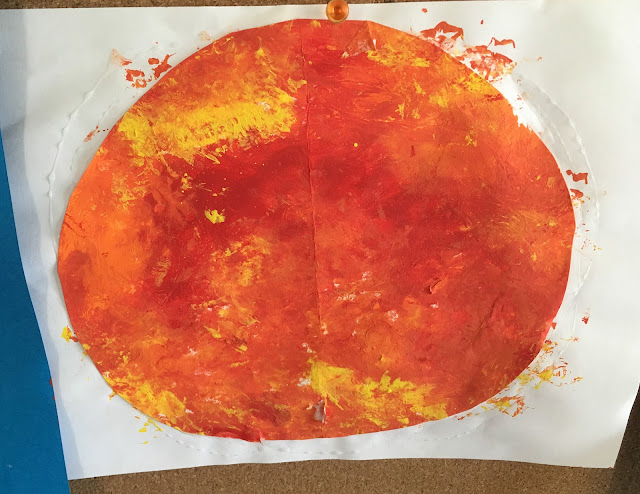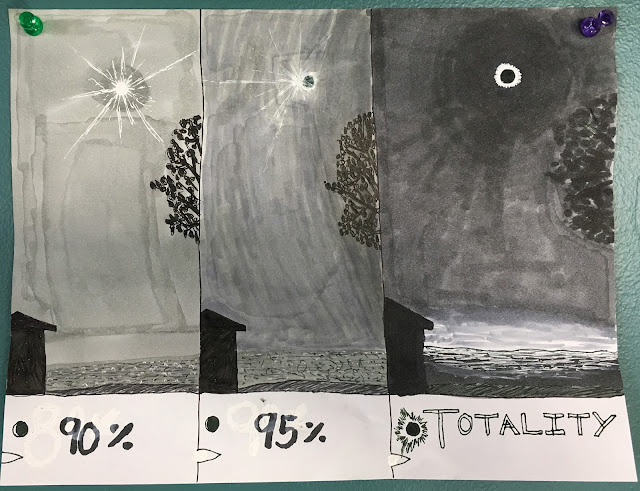Before we went on our short trip to Idaho to see the solar eclipse (which was AMAZING—you can read about it
here on my other blog), I decided to squeeze in a short unit on the sun and eclipses. A lot of this was review for the older kids, but it was new to the younger ones, and we all had fun with the models. I had some good ideas that I never got to use (eclipse cookies, for one) but there just wasn't enough time! Maybe for the eclipse in 2024 we'll use them. Or in 2045! Will I still be homeschooling in 2045! Ha! It feels like it. But since Ezekiel would be…let's see…28? by then—let's hope I'm taking a well-deserved rest.
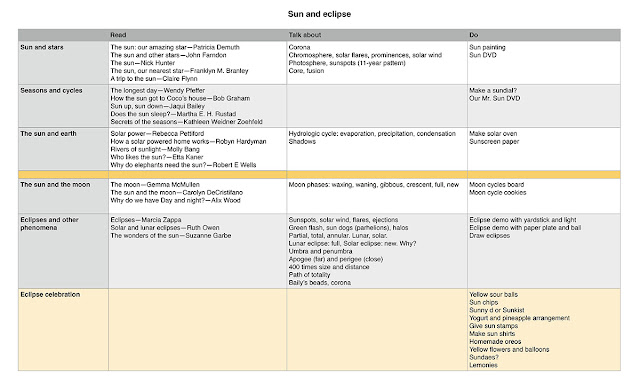
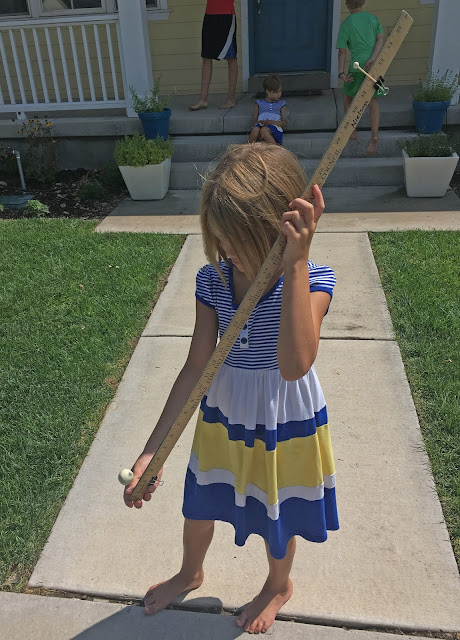
This yardstick model was fun and easy to make. You can find the
instructions here. You make a clay ball for the earth, and another ball, 1/4 of its size, for the moon. You clip them on the yardstick 30 inches apart. Then you use sunlight (or electric light) to make the moon cast a shadow on the sun. I really liked this because it showed how small the "dot" of totality is at any one time.
Here's another cool model, for which I got the
idea here. This is an illustration of why the moon phases appear the way they do on earth, which is something that seems simple, and I've thought I understood long ago—but when I actually tried to think it through, I couldn't explain it satisfactorily. This model makes it perfectly clear that it is our perspective, looking "out" from earth, that causes the different phases.
As you can see by looking at the black foam board, from above, the moon always faces its same side toward the sun. The same side is always lit (represented by the white sides of the ping-pong balls). But when you stick your head in the hole and look outward, you see the perspectives I pasted around the black foam board (on the photos with words). I just stuck my head in and took pictures as I turned around so you could see: crescent, half, gibbous, full, and new moon. It's also pretty clear from this model why a solar eclipse can only happen at New Moon, and a lunar eclipse happens at Full Moon.
If you want to reinforce the solar/lunar eclipse difference, you might like
these worksheets we used for diagramming them. (Scroll down a bit to this picture:)
Sebastian also used this foam board model to show how the solar eclipse worked. He just moved the camera around to make the moon block out the sun in successive stages. The eclipse we saw had the moon moving from right to left across the sun, as Sebastian showed above (compare with this picture below):
Only it was really more of a diagonal, starting in the right upper quadrant of the sun and moving downward. [Time proceeds, in this picture, from left to right.]
We had a surprising amount of fun (considering that we aren't, ahem,
all preschoolers) doing this fiery sun painting project. Instructions are
here, and it's really easy: just cut out a white circle and squeeze blobs of warm-colored paint on it. Then wrap the whole circle with plastic wrap (covering the blobs of paint). Squish it around with your hands and fingers to make fiery suns! Then paste the suns onto dark paper and add flares and prominences if you want.
I think Teddy's sun (above) was my favorite.
We made our
moon phase cookies again, using homemade "Oreos." These cookies are way better than real Oreos, in my opinion. The recipe is at the link above.
Another good thing we did during our mini-unit was make these eclipse T-shirts! (This picture was taken at
Bear World in Rexburg, where we watched the eclipse.) I think they're so cute, and they were so easy! I cut out contact-paper circles (smaller for the smaller shirts and bigger for the bigger—I used bowls or plates to trace around) and stuck them onto the fronts of the black T-shirts. Then, using
glow-in-the-dark fabric paint, the kids painted lines and rays out from the contact-paper circles. You can use the paint squeeze-bottle itself, or help it along with a thin brush. We did both.
The clear glow-in-the-dark paint was quite pale, so we made it pretty thick so it would show up even when NOT glowing. And I like the whitish color of it. But Abe used yellow on his, and that looked good too, and a couple of the kids just put in yellow accents with their white paint. (The girls would have used pink and orange paint if I'd let them—that probably would have been cute too, but I wanted them to look accurate!:)) You really can't mess these up! After the paint dried, we just peeled off the contact paper, and were left with a nice neat circle of "moon," with the beautiful glowing corona of the sun radiating out around it.
We wore these (of course) on eclipse day and other times on our trip, and lots of people noticed the kids' shirts and complimented them. And the shirts, my children tell me, really did glow during totality!
Here's a better look at the shirt
Teddy's had yellow and white on it
This is a picture Seb drew of the eclipse after we got home.
Well, I must admit that the BEST part of this unit was
seeing totality, and nothing else can compare! But I think it would be a pretty fun unit even if you were just going to view a partial eclipse. Here is my Pinterest Board for this unit:
Maybe I'll be updating it in 7 years! :)



































